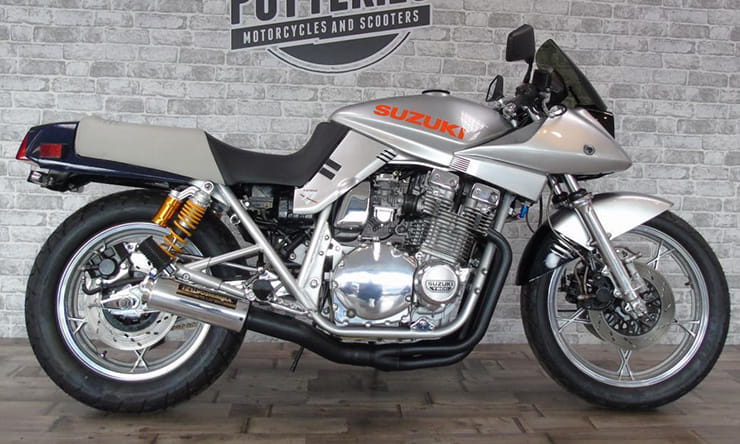As a lot of you know, I have an '01 and an '03 GSX750F. The '01 is for winter use (not on the road this winter because the tank, carbs and other things are removed), and the '03 is for summer use.
The '01 has about 50,000 kms and the '03 has about 65,000 kms. The '03 has what sounds like a bad cam chain rattle, which has been there for several years. I'd like to fix it, but since I have two of the same engine I'm thinking of rebuilding one of them and putting it in the summer bike.
Riding weather is around the corner, and if I pull the engine from the '03, I likely won't be riding for a long while because I have zero experience rebuilding a motorcycle engine. I would prefer to rebuild the engine in my winter bike while I ride the '03, then swap the engine when it's done.
My question is for the numbers on the bike. Since the '03 is original, is there an argument for keeping it original, with the original numbers matching? Or does this not matter with bikes? I was raised a car guy and only started on bikes later in life. I'm not sure if bike engines even have numbers.
Also, any advice on rebuilding an engine is appreciated. What are the basics that should be addressed? i.e. What should be replaced, what just needs to be cleaned, what needs to be machined, worthwhile upgrades? Any good YouTube tutorials? Most of my research will be in multiple YouTube tutorials to see the process and take the best techniques from several mechanics.
The '01 has about 50,000 kms and the '03 has about 65,000 kms. The '03 has what sounds like a bad cam chain rattle, which has been there for several years. I'd like to fix it, but since I have two of the same engine I'm thinking of rebuilding one of them and putting it in the summer bike.
Riding weather is around the corner, and if I pull the engine from the '03, I likely won't be riding for a long while because I have zero experience rebuilding a motorcycle engine. I would prefer to rebuild the engine in my winter bike while I ride the '03, then swap the engine when it's done.
My question is for the numbers on the bike. Since the '03 is original, is there an argument for keeping it original, with the original numbers matching? Or does this not matter with bikes? I was raised a car guy and only started on bikes later in life. I'm not sure if bike engines even have numbers.
Also, any advice on rebuilding an engine is appreciated. What are the basics that should be addressed? i.e. What should be replaced, what just needs to be cleaned, what needs to be machined, worthwhile upgrades? Any good YouTube tutorials? Most of my research will be in multiple YouTube tutorials to see the process and take the best techniques from several mechanics.


















